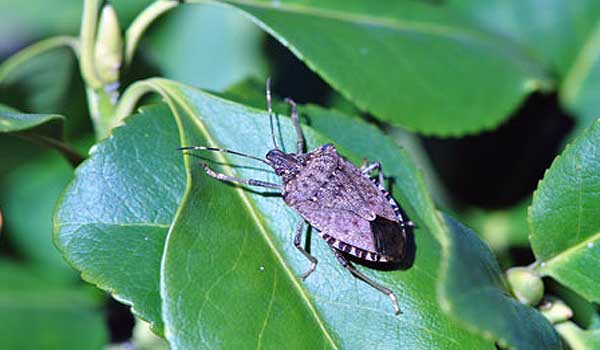
Stink Bug Poses Threat to Blueberries
With the brown marmorated stink bug rapidly expanding its reach across North America, researchers decided recently to study whether it poses a risk to blueberries. The answer in a word: Yes.
“We conclude that H. halys (the stink bug) does have potential to severely damage blueberries and may become an important economic pest,” wrote the researchers.
Nik Wiman, an Oregon State University entomologist and the paper’s lead author, said researchers initiated the study to help growers prepare for an anticipated increase in the stink bug’s population in blueberries. The insect has become a major agricultural pest in the Mid-Atlantic region since first becoming established there in the 1990s. It has since spread to blueberry producing states such as Michigan, Washington, Oregon and California. Although the pest has been present in Oregon for several years, only recently has it begun to threaten agriculture.
The pest feeds on vegetative structures, such as stems and leaves; and reproductive plant structures, such as seeds, nuts, pods, fruits and vegetables.
In the blueberry study, researchers conducted the experiments on research farms in Oregon and New Jersey in 2013 by subjecting berry clusters of different cultivars to different densities of the stink bug for weeks-long periods as berries matured.
Researchers studied the pest’s effects on Bluecrop and Elliott in New Jersey, and on Duke and Aurora in Oregon.
Feeding damage from the pest can be grouped into a handful of categories, the researchers wrote, including wilting and necrosis, deformation of fruits and seeds, modified vegetative growth and tissue malformation. Also, lesions left behind at feeding sites can facilitate secondary infections of plant pathogens.
Among multiple symptoms researchers found discoloration of the fruit surface, necrosis of internal tissues, weight loss and depletion of soluble solids.
They found that penetration of the berry by the pest’s mouthparts and salivation contributed to necrosis “because it allows the watery saliva to enter the fruit and break down tissues, and provides a pathway for pathogen introduction.”
Researchers also found that stink bug damage is partially dependent on pressure from pathogens in the local environment and, “may thus be tied to weather conditions, sanitation or disease management practices.”
Researchers also found shriveled berries that were suffering from dehydration from being fed upon by the bug.
Researchers found the pest’s optimal feeding temperatures are between 63- and 85-degrees Fahrenheit.
In conclusion, the researchers wrote that the pest has the potential to negatively impact the quality of blueberries, causing economic loss if densities of H. halys and environmental conditions are favorable. “We found that there could be decreases in quantity of healthy fruit as levels of discolored, necrotic berries and lighter, shriveled berries increased as a result of H. halys feeding…
“It is likely that there will be increasing impact of H. halys on commercial blueberries as populations of this pest continue to invade new blueberry production regions,” they wrote. “These results suggest that this invasive pest has potential (to) become a direct pest in commercial blueberries.”
Wiman asks to hear from growers who find the bug in their blueberry fields by emailing him at BMSB@oregonstate.edu or calling him at 541-737-2534.
|
